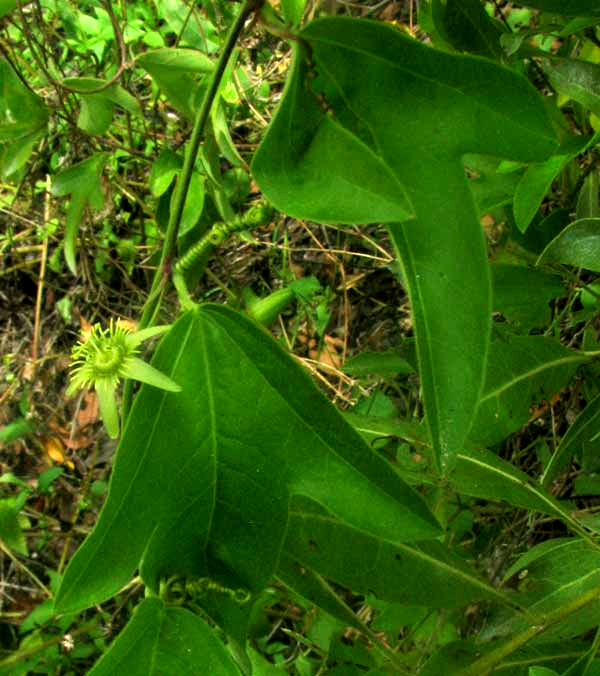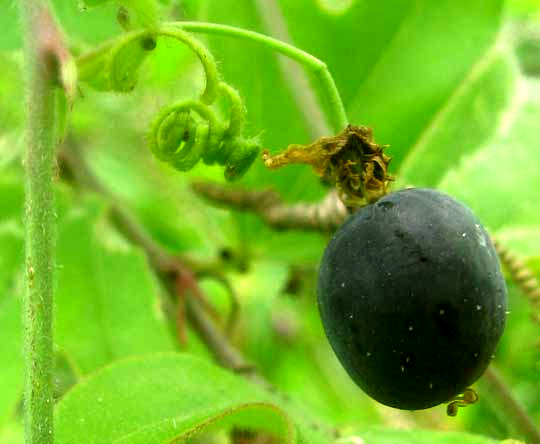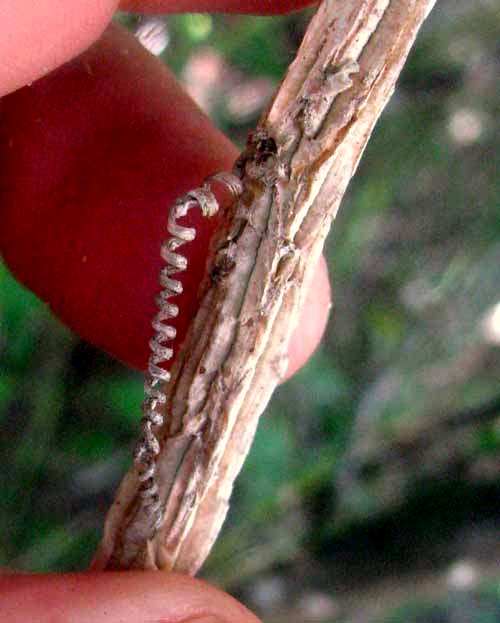Excerpts from Jim Conrad's
Naturalist Newsletter

from the July 3, 2011 Newsletter issued from Mayan Beach Garden Inn 20 kms north of Mahahual; Caribbean coastal beach and mangroves, ~N18.89°, ~W87.64°, Quintana Roo state, MÉXICO
A TINY, GREEN PASSIONFLOWER
Nowadays weedily twining among the bushes and small trees along the road up our sand ridge there's a passionflower vine producing flowers with the same structure of the above passionflower, but which is a bit less than an inch across (2cm), and is totally dark green. You can see a flower among leaves above.
A close-up of the Lilliputian flower is shown below:

In that picture the green, petal-like structures are the flower's sepals, or calyx segments; the flower lacks any real corolla or petals. The slender, outward pointing items are considered to be parts of a "corona," or "crown," rather like a daffodil's, except that this corona is divided into many hairlike segments.
The flower bears five outward-arching, green stamens surrounding a stalk (gynophore) raising the oval, green ovary above the flower's center. Atop the ovary, three styles diverge and bend backwards. Each style is tipped with a rounded stigma. Once pollination takes place, these parts will shrivel and fall away, except for the ovary on its gynophore. The ovary matures into a blackish, plumlike fruit on a stem, as shown below:

Because its older stems bear corky ridges, the vine's English name usually is given as Corky-stemmed Passionflower. It seems to be PASSIFLORA SUBEROSA*. You can see a tendril-bearing, corky stem at the vine's base below:

Despite the vine's small proportions, it's an especially hardy species, thriving on well-drained, sandy soil or limestone in tropical and semitropical lowlands throughout the Americas, where it's native, plus it's become a serious invasive weed in many hot parts of Eurasia and Africa. It's a variable species. Our vines' flowers are more consistently dark green than other Corky-stemmed Passionflower blossoms found on the Internet.
The mature fruit's jellylike, seed-crammed interior is edible and somewhat sweet like other passionfruits I've eaten, just that there's not much of it. As often is the case with passionflower vines, various butterfly caterpillars eat the leaves. One host is the Gulf Fritillary, which currently is our most frequently seen butterfly species.